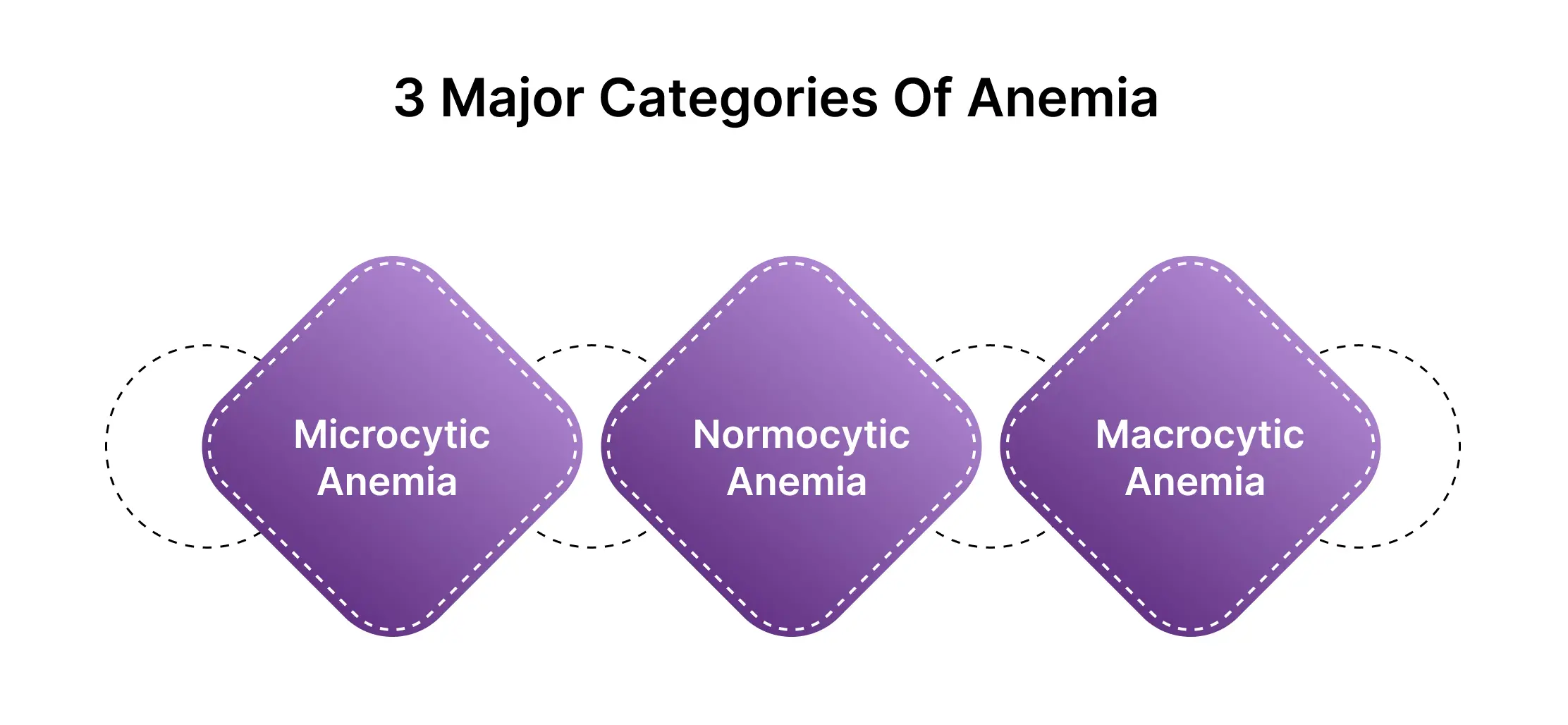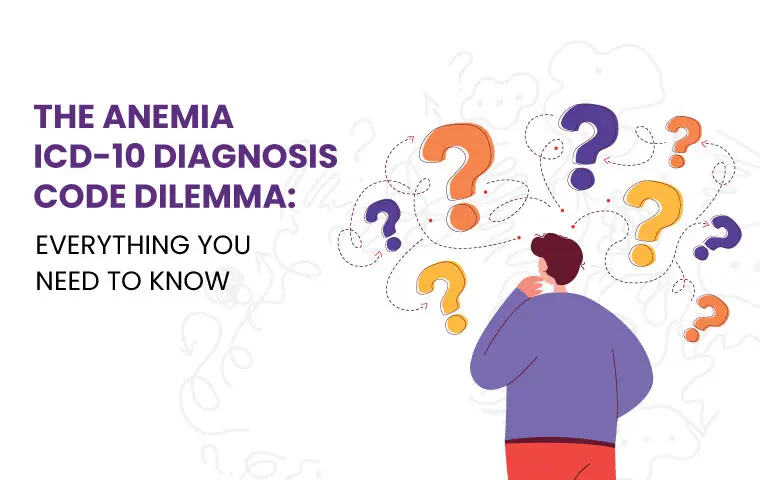Can you picture this, you have a patient with anemia, but you're struggling to find the right ICD-10 diagnosis code to document their condition. The clock is ticking, and you're feeling the pressure. With so many codes to choose from, how do you know which one is the right fit?
It's a common dilemma that healthcare providers face, and it can have serious consequences for patient care. In this blog, we're going to tackle the anemia ICD-10 diagnosis code dilemma head-on. Get ready to master the art of coding anemia and ensure your patients receive the best possible care.
Table of Contents
Anemia: The Silent Thief of Vitality and Energy
What are the 3 major categories of Anemia?
What is the ICD-10 Code for Anemia?
Different Categories of Anemia ICD 10 Codes.
Anemia: The Silent Thief of Vitality and Energy
Many individuals are not aware of its symptoms or how it can impact their overall health. This silent thief of vitality and energy can creep up on you, leaving you feeling tired, weak, and unable to perform daily activities. Before starting let’s have a closer look to what basically anemia is.
What is Anemia?
Anemia is a medical condition that occurs when the number of red blood cells in the body decreases, or when the red blood cells are not functioning properly. Red blood cells are responsible for carrying oxygen from the lungs to the rest of the body, and when there aren't enough of them, the body can't get the oxygen it needs to function properly.
Symptoms of Anemia
The symptoms of anemia can vary depending on the severity of the condition and its underlying cause. Some common symptoms of anemia include:
- Fatigue or weakness
- Shortness of breath
- Dizziness or lightheadedness
- Headaches
- Cold hands and feet
- Pale skin
- Chest pain
- Irregular heartbeat
- Brittle nails
- Difficulty concentrating
Types of Anemia
There are several major types of anemia, each with its own causes and specific diagnostic criteria. Here are some of the most common types of anemia:
Iron-deficiency anemia: This is the most common type of anemia, caused by a deficiency of iron, which is necessary for the body to produce hemoglobin, a protein found in red blood cells that carries oxygen.
Vitamin deficiency anemia: This type of anemia is caused by a deficiency of certain vitamins, such as vitamin B12 or folate, which are necessary for red blood cell production.
Hemolytic anemia: This type of anemia occurs when red blood cells are destroyed or broken down more quickly than they can be replaced. Hemolytic anemia can be inherited or acquired, and can be caused by various factors, including infections, autoimmune disorders, and medication reactions.
Aplastic anemia: This type of anemia is caused by a decrease in the number of red blood cells, white blood cells, and platelets in the body. It can be caused by a variety of factors, including exposure to toxic chemicals, radiation, and certain medications.
Sickle cell anemia: This is an inherited form of anemia caused by a genetic mutation that affects the shape of red blood cells, causing them to become rigid and form a crescent or "sickle" shape. This can lead to a variety of complications, including pain, organ damage, and increased risk of infection.
Other types of anemia include thalassemia, anemia of chronic disease, and pernicious anemia. The treatment for anemia depends on the underlying cause and severity of the condition, and may include dietary changes, supplements, medication, or other therapies.
What are the 3 major categories of Anemia?
Anemia can be classified into 3 main categories:

Microcytic anemia
This type of anemia is characterized by small red blood cells, and is often caused by a deficiency in iron. Other causes of microcytic anemia can include thalassemia, lead poisoning, and some types of anemia of chronic disease.
Normocytic anemia
This type of anemia is characterized by red blood cells that are a normal size, but there are too few of them. Normocytic anemia can be caused by a variety of factors, including chronic diseases (such as kidney disease or cancer), bone marrow disorders, and certain medications.
Macrocytic anemia
This type of anemia is characterized by abnormally large red blood cells, and can be caused by a deficiency in vitamin B12 or folic acid. Other causes of macrocytic anemia can include alcoholism, liver disease, and certain medications.
What is the ICD-10 Code for Anemia?
The ICD-10 code for anemia is D50-D64. This is a range of codes that covers various types of anemia, including iron deficiency anemia, megaloblastic anemia, hemolytic anemia, and others. The specific code used to diagnose and classify the type of anemia will depend on the underlying cause and other clinical factors, such as the severity of the anemia and any associated symptoms or complications.
Different Categories of Anemia ICD 10 Codes
Iron Deficiency Category
|
D50 Category |
|
|
D50.0 |
Iron deficiency anemia secondary to blood loss (chronic) |
|
D50.1 |
Sideropenic dysphagia |
|
D50.8 |
Other iron deficiency anemias |
|
D50.9 |
Iron deficiency anemia, unspecified |
Vitamin Deficiency Anemia
|
D51 Category (Vitamin B12 deficiency anemia) |
|
|
D51 |
Vitamin B12 deficiency anemia |
|
D51.0 |
Vitamin B12 deficiency anemia due to intrinsic factor deficiency |
|
D51.1 |
Vitamin B12 deficiency anemia due to selective vitamin B12 malabsorption with proteinuria |
|
D51.3 |
Other dietary vitamin B12 deficiency anemia |
|
D51.8 |
Other vitamin B12 deficiency anemias |
|
D51.9 |
Vitamin B12 deficiency anemia, unspecified |
|
D52 Category ( Folate Deficiency Anemia) |
|
|
D52 |
Dietary folate deficiency anemia |
|
D52.1 |
Drug-induced folate deficiency anemia |
|
D52.8 |
Other folate deficiency anemias |
|
D52.9 |
Folate deficiency anemia, unspecified |
Hemolytic anemia
|
D55 Category (Anemia Due To Enzyme Disorder) |
|
|
D55.0 |
Anemia due to deficiency of glucose-6-phosphate dehydrogenase |
|
D55.1 |
Anemia due to other disorders of glutathione metabolism |
|
D55.21 |
Anemia due to pyruvate kinase deficiency |
|
D55.3 |
Anemia due to disorders of nucleotide metabolism |
|
D55.8 |
Other anemias due to enzyme disorders |
|
D55.9 |
Anemia due to enzyme disorder, unspecified |
|
D56 Category (Thalassemia) |
|
|
D56.0 |
Alpha thalassemia |
|
D56.1 |
Beta thalassemia |
|
D56.2 |
Delta-beta thalassemia |
|
D56.3 |
Thalassemia minor |
|
D56.4 |
Hereditary persistence of fetal hemoglobin [HPFH] |
|
D56.5 |
Hemoglobin E-beta thalassemia |
|
D56.8 |
Other Thalassemia |
|
D56.9 |
Thalassemia, Unspecified |
|
D57 Category (Sickle Cell Disorder) |
|
|
D57.0 |
HB SS Disease with crisis |
|
D57.1 |
Sickle-cell disease without crisis |
|
D57.2 |
Sickle-cell/Hb-C disease |
|
D57.3 |
Sickle-cell trait |
|
D57.4 |
Sickle-cell thalassemia |
|
D57.8 |
Other sickle-cell disorders |
Aplastic anemia
|
D61 Category |
|
|
D61.0 |
Constitutional aplastic anemia |
|
D61.1 |
Drug-induced aplastic anemia |
|
D61.2 |
Aplastic anemia due to other external agents |
|
D61.3 |
Idiopathic aplastic anemia |
|
D61.8 |
Other specified aplastic anemias and other bone marrow failure syndromes |
|
D61.9 |
Aplastic anemia, unspecified |
Final Words
In last, we know that anemia can be a complex condition that requires thorough evaluation and management. By understanding the various categories and types of anemia, we can accurately diagnose and treat our patients using the appropriate ICD-10 codes.
Having a clear understanding of the codes can not only help you in our daily practice, but also assist in accurate coding for insurance reimbursement purposes. Remember to stay up to date with any changes or updates in the codes, and continue to provide the best possible care for your patients with anemia.
ABOUT AUTHOR

Grant Elliot
As a blog writer with years of experience in the healthcare industry, I have got what it takes to write well researched content that adds value for the audience. I am a curious individual by nature, driven by passion and I translate that into my writings. I aspire to be among the leading content writers in the world.
